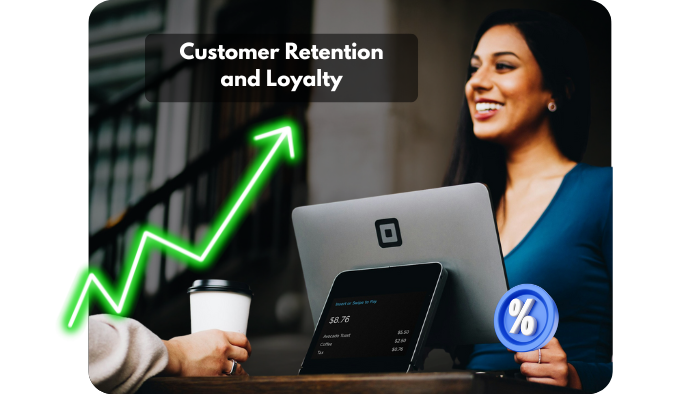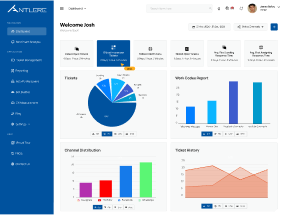There is more than the quality of goods and services a company has to put into place to expand. Currently, the key differentiator is customer experience CX because businesses are focusing on providing much more than transactional value. Today, customer experience management (CXM) is what determines how companies grow and innovate, and ultimately how they stay in business. This shift has even changed the CX growth within the sphere of the corporate environment as the value of the company is measured on what it offers but also on how customers feel during their journey.
A prime example of this transition can be brands like Apple. Their stores aren’t simply retail outlets but places where customers can experience the items getting displayed in a background that has been chosen specifically for that. The emphasis on experience turned out to contribute to Apple becoming the most valuable corporation in the world.
Understanding Customer Experience CX Management (CXM)
Customer experience CX management is the ongoing process of building and reacting to inquiries from customers so as to meet or exceed their expectations. It’s not just enough to merely resolve issues as they come but they must also think through and meet consumers’ expectation of being satisfied on all touch points. CXM forms a holistic strategy whichPlaces emphasis on the emotions in the customer’s journey in addition to working in terms of satisfaction, convenience, and trust. A successful CXM is rapidly becoming the linchpin of modern businesses with the ability to deepen long term business partnerships and consequently increase profitability.
Example: The reason Amazon has been so successful is because they are so good on the CXM front. Amazon improves every single aspect of the customer experience — one click buying, personalized product recommendation, super fast shipping, and so on – to make the entire experience as easy and pleasurable as possible for the customer. This has revolutionized the e commerce and customer loyalty.
Key Components of Effective CXM
Personalization as the Cornerstone of CXM
Personalization is not just a feature, it’s the backbone of every good CXM strategy. In a world of information and customer desire for businesses to know them, generic interactions get swiftly replaced by personalized experiences. When firms use data to give customers personalized recommendations, messages, and services, customers feel valued and customer loyalty increases. Customization helps companies form relationships with customers, taking some of it out of the role of a supplier and putting it more into that of a solution provider.
Netflix is a great example of a service that personalizes itself to enhance a service. The experience is unique to each user, based upon viewer preference and viewing history, as its technology records this data and tailors suggestions. The amount of this customization is interesting to users and lowers churn rates.
Omnichannel Integration for Seamless Interactions
As the modes of interaction with businesses are growing—from smartphone apps to real stores, customers are increasingly engaging with businesses. By having an omnichannel strategy that fits, you guarantee that your interactions will always be seamless and reliable. Customers expect their trip to be seamless, and that means when they switch platforms, whether by talking online or going into the store, it ought to keep on going pretty seamlessly. This flexibility is enabled by omnichannel CXM giving a cohesive experience that moves beyond silos to boost satisfaction and confidence.
In an instance, Starbucks has attracted omnichannel integration with the help of its website, mobile app and in store experience. Customer preferences are natively managed across all the channels: customer may place order via the app, follow rewards and pick up the coffee in the store. And this ensures a seamless journey no matter how customers want to engage.

How CXM Drives Business Growth?
Enhancing Customer Retention and Loyalty
The strength of a company’s CXM has a direct influence on its customer retention. Clients are made to maintain interest in them and come back again and again with a well-executed approach. Keeping a current client is much less expensive than getting a new client and loyal customers also tend to spend more over time. The goal of CXM is to transform one-time buyers into permanent customers, by constantly refining client experiences and listening closely to feedback, this is paramount for the continuity of business development.
Sephora has an excellent CXM model for its loyalty program which promotes a recurring business like Sephora’s loyalty program. Not only do they receive points for purchases, but they also get customized beauty advice and special perks … making them feel more valued and loyal to your brand.
Amplifying Word-of-Mouth and Brand Advocacy
Satisfied customers are your biggest champions. Customers don’t just stay loyal, they become outspoken heroes of CXM when done well. Both in person and on social media, positive word of mouth can be a ripple effect, therefore increasing exponentially a brand’s reach. Additionally, satisfied customers will go the extra mile to post positive reviews, talk about their experience with others, and even recommend businesses which will act as a growth engine for businesses spending little to zero marketing dollars.
For instance, Tesla’s referral program has customer advocacy to manage growth. Customers who bring someone to buy a Tesla get rewarded, creating a ready-made ecosystem of passionate brand advocates with a story to tell.

Technological Advancements Elevating CXM
The Role of AI and Machine Learning in Customer Insights
The way firms handle customer interaction has been transformed by AI and machine intelligence. These tools can help an organization dig through massive amounts of data to find hidden patterns of client behavior, preferences and emotions. Predictive analytics might be used by companies to offer preemptive solutions, customized and timely involvement, all of which make the customer experience cooler than ever before. Organizations can see future friction spots (and even fix them before they happen) thanks to machine learning.
The way firms handle customer interaction has been transformed by AI and machine intelligence. These tools can help an organization dig through massive amounts of data to find hidden patterns of client behavior, preferences and emotions. Predictive analytics might be used by companies to offer preemptive solutions, customized and timely involvement, all of which make the customer experience cooler than ever before. Organizations can see future friction spots (and even fix them before they happen) thanks to machine learning.
For instance, while Spotify uses artificial intelligence to deliver custom song recommendations on features like ‘Discover Weekly,’ where an algorithm selects a playlist reflecting the listening history of the user. This draws listeners in, and encourages them to discover other information which ultimately increases the whole user journey.
Automation in Delivering Consistent Customer Service
Another big change in CXM is automation, especially for delivering consistently and efficiently high quality customer service. We used chatbots, AI helpdesks and automated workflows to answer client queries quickly; even outside of normal office hours. The result of these decreases the wait times, the response accuracy and ensures that no client inquiry has been dropped in the cracks. Human touch is important, but it can be freed up from mundane tasks for more robust and emotionally charged encounters by robots.
For instance, several airlines have also introduced automated customer assistance systems to take over the tasks of flight status queries and rescheduling, to shorten response times by an order of magnitude. They achieve this by combining automated solutions with well crafted support teams to ensure customers’ fundamental requirements are satisfied at once whilst offering the option to escalate more complex issues with a live agent.
Challenges in Implementing CXM Strategies
Balancing Human Interaction with Digital Interfaces
Among its most difficult challenges, CXM is having to find the right balance between automation and human engagement. In their attempt to speed operations with technology, it can feel impersonal. Even today, our customers want real connections, especially with difficult or sensitive issues. However, businesses must have the balance right and ensure that it’s not digital which is replacing the human element, it’s digital which compliments the human element.
Chatbots are used by luxury hotel companies to take care of things like room service orders or simple questions but they still have highly trained employees who handle check-ins as well as deal with individual issues. It is based on a deliberate integration of technology and human service so that the customers make the most of the efficiency of digital tools and warm personal care.
Overcoming Data Privacy Concerns
With CXM techniques more and more are becoming dependent on data in order to personalize those experiences, and privacy concerns have collectively emerged. With customers growing informed and cautious about how their data is used these days, the challenge for companies trying to meet their business goals becomes difficult. If companies want customers to trust them, they need to be open about data collection and usage and to comply with the law, such as GDPR, and allow customers a say in how their personal data is used. Even the most robust CXM approach will fail without addressing these challenges.
Take, for example, “Apple has fought for privacy” by adding the feature ‘App Tracking Transparency,’ which grants customers more freedom to decide on which applications can trail their data. While they keep giving individualized experiences, this proactive position on privacy has further built more trust amongst customers.
The Future of CXM and Business Growth
Shifting Towards Predictive Customer Experience Models
Predictive analytics is the future of CXM where it enables firms not only to respond to but as well as to predict and fulfill customer requirements even before customers start voicing them. Hyper personalized experiences, changing in real time, will be based on predictive models powered by AI and will result in businesses delighting customers and deepening connections. Instead, this will allow organizations to act more nimbly, proactively, and in reaction to their customer’s continually altering needs.
For instance, predictive analytics is used for instance by Google Maps to analyze traffic and provide a route that is as brief as possible in real time. Picking up on customer pain points and catering to them in a proactive manner, provides a much better experience for customers to the app, keeping them reliant on the app for their daily journey.

The Growing Importance of Emotional Engagement
With digital interactions there is no stopping and increased emotional involvement will only grow in importance as a differentiator of companies. These days, customers want something more than just fast service; it begins with them wanting to feel understood and respected, and to actually feel emotionally tied to the company they do business with. Those companies that do develop emotionally resonant experiences will also see increases in customer loyalty and company success. And as Customer Experience Management takes us to the future, emotional intelligence will be that force and the technological breakthroughs will provide the means.
For instance, Nike’s ads do not just sell shoes because their audience connects with their advertisements emotionally. The ‘Just Do It’ concept from Nike cultivates a very strong emotional chord with people, who feel that they share in a ‘community’, embracing ambition and progress.
Wrapping Up
Customer experience is no longer optional! Business growth is one of the key drivers of it. Embracing personalization and technology can very well help businesses forge stronger relations with the customers. At Abacus Outsourcing, we do that, and therefore help you to improve your CXM strategy and give your users nothing but amazing experience.
Join us together to grab new opportunities to expand and carry your company to new peaks!
Together, let’s seize new chances for expansion and take your company to new heights!

FAQ's
Customer experience software refers to tools designed to help organizations manage and enhance interactions with their customers. These platforms provide valuable insights into customer behavior and preferences, enabling businesses to tailor their offerings and improve overall satisfaction. By utilizing customer experience solutions, companies can streamline their processes and create a more engaging experience for their customers.
CX stands for customer experience, which encompasses all interactions a customer has with a brand, from initial contact to post-purchase support. In business, effective customer experience management is crucial because it directly impacts customer satisfaction, loyalty, and ultimately, revenue. Companies that prioritize CX tend to see higher engagement and retention rates.
Customer experience management (CXM) involves overseeing and optimizing all aspects of the customer journey to ensure a positive experience. CX software provides businesses with the tools they need to track customer feedback, analyze interactions, and implement strategies for improvement. By leveraging a customer experience platform, organizations can enhance their service delivery and foster stronger customer relationships.
A customer experience platform is an integrated solution that combines various tools and functionalities to manage and analyze customer interactions. Key features to look for include data analytics, customer feedback mechanisms, and personalized communication options. An effective CX platform should enable businesses to gather insights and make data-driven decisions to improve their overall customer experience.
Customer experience solutions play a vital role in driving business success by providing organizations with the insights and tools necessary to understand their customers better. By implementing customer experience management software, businesses can enhance their service delivery, foster loyalty, and differentiate themselves in competitive markets. Ultimately, prioritizing CX leads to increased customer satisfaction and higher profitability.









